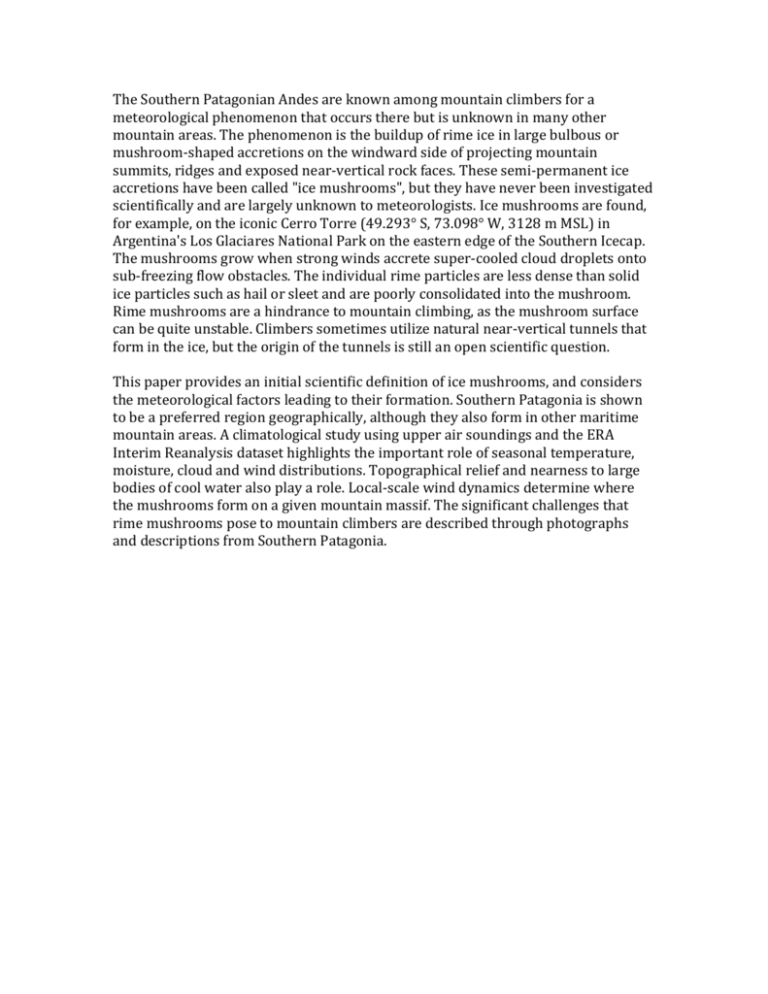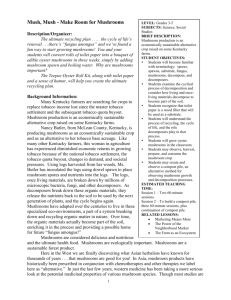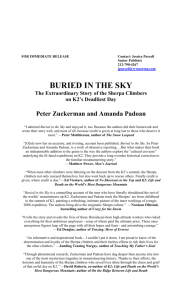abstract
advertisement

The Southern Patagonian Andes are known among mountain climbers for a meteorological phenomenon that occurs there but is unknown in many other mountain areas. The phenomenon is the buildup of rime ice in large bulbous or mushroom-shaped accretions on the windward side of projecting mountain summits, ridges and exposed near-vertical rock faces. These semi-permanent ice accretions have been called "ice mushrooms", but they have never been investigated scientifically and are largely unknown to meteorologists. Ice mushrooms are found, for example, on the iconic Cerro Torre (49.293° S, 73.098° W, 3128 m MSL) in Argentina's Los Glaciares National Park on the eastern edge of the Southern Icecap. The mushrooms grow when strong winds accrete super-cooled cloud droplets onto sub-freezing flow obstacles. The individual rime particles are less dense than solid ice particles such as hail or sleet and are poorly consolidated into the mushroom. Rime mushrooms are a hindrance to mountain climbing, as the mushroom surface can be quite unstable. Climbers sometimes utilize natural near-vertical tunnels that form in the ice, but the origin of the tunnels is still an open scientific question. This paper provides an initial scientific definition of ice mushrooms, and considers the meteorological factors leading to their formation. Southern Patagonia is shown to be a preferred region geographically, although they also form in other maritime mountain areas. A climatological study using upper air soundings and the ERA Interim Reanalysis dataset highlights the important role of seasonal temperature, moisture, cloud and wind distributions. Topographical relief and nearness to large bodies of cool water also play a role. Local-scale wind dynamics determine where the mushrooms form on a given mountain massif. The significant challenges that rime mushrooms pose to mountain climbers are described through photographs and descriptions from Southern Patagonia.











